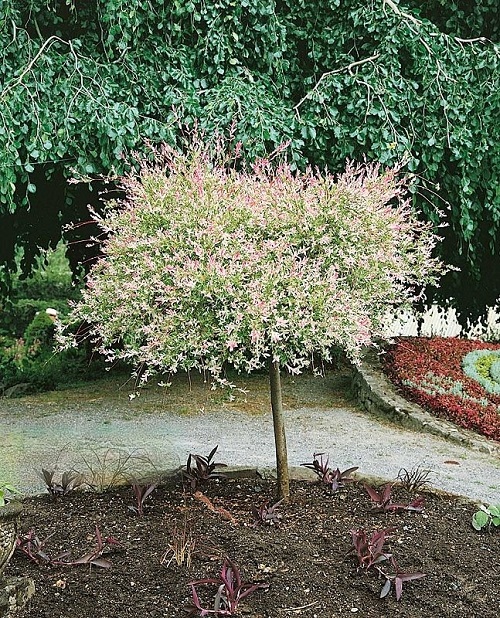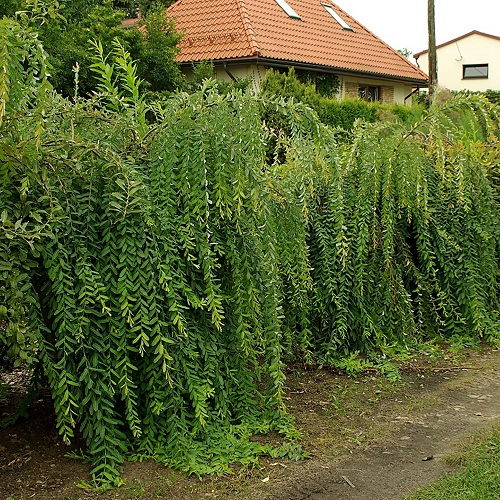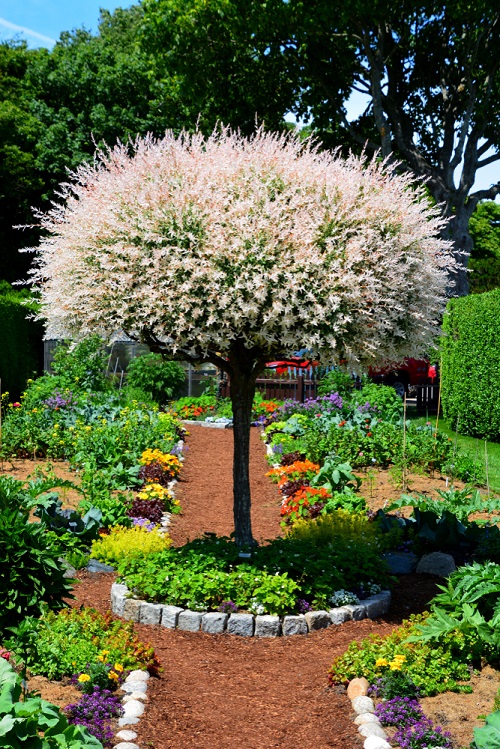Dappled Willow Tree can be a flower-full addition to any garden – be it small or large! Here are the best varieties you can grow!
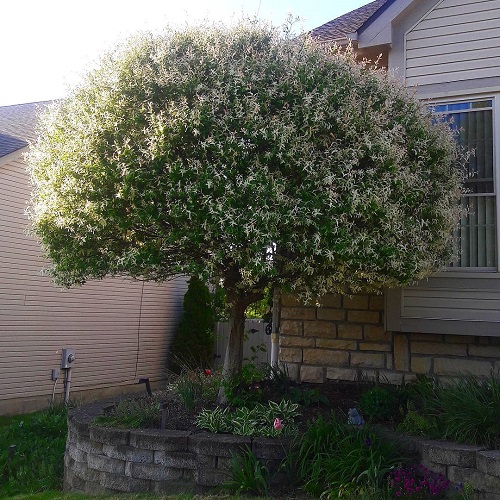
If you’re searching for a unique, fast-growing shrub that adds a touch of magic to any landscape, look no further than the Dappled Willow Tree. Known for its variegated leaves that perform a mesmerizing color show throughout the seasons, this ornamental gem is a gardener’s dream and a focal point in any outdoor space.
Everything About Growing Pussy Willow
What is a Dappled Willow Tree?
Dappled Willow Trees, scientifically known as Salix integra ‘Hakuro Nishiki,’ are distinctive and eye-catching ornamental shrub that belongs to the willow family, Salicaceae.
Unlike traditional willow trees, which can grow quite tall and are often used for their graceful weeping branches and shade-providing canopies, Dappled Willow Tree Varieties are smaller in stature, typically reaching heights of 4 to 6 feet (1.2 to 1.8 meters) when fully mature.
In contrast to traditional willow trees, which are known for their rapid growth and invasive root systems, dappled willows have a more restrained growth rate and less aggressive roots. This makes them easier to manage and suitable for smaller garden spaces.
Dappled Willow Tree Varieties
1. Dappled Willow
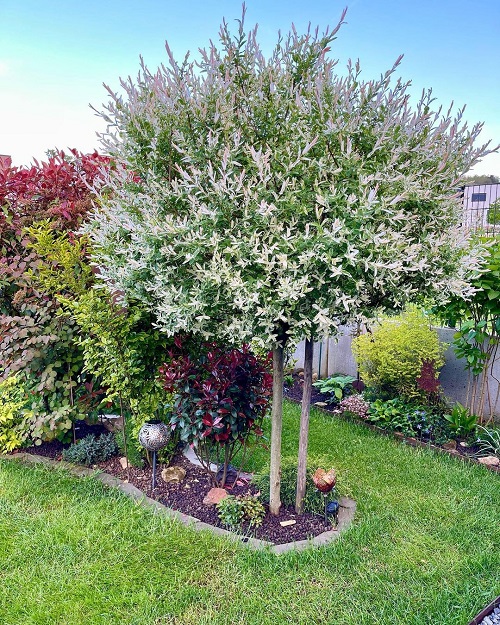
Botanical Name: Salix integra ‘Hakuro Nishiki’
Dappled Willow Tree is a popular ornamental tree celebrated for its striking variegated leaves that blend shades of pink, white, and green. Its elegant appearance adds a touch of color and texture to garden landscapes. This cultivar is also known as Nishiki Willow.
2. Flamingo
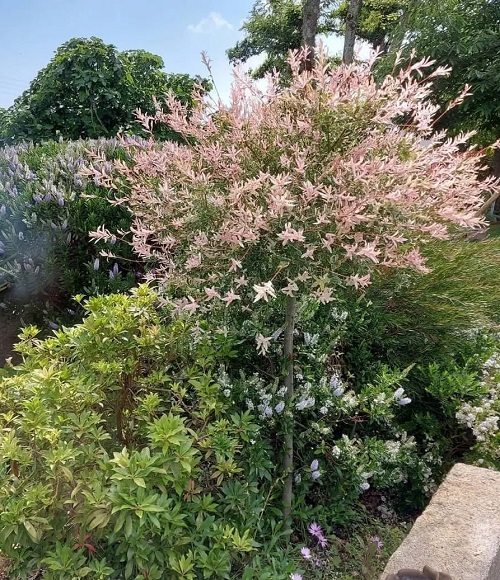
Botanical Name: Salix integra ‘Flamingo’
This cultivar is a smaller version of ‘Hakuro Nishiki’ and is known for its pink and white variegated leaves. It can grow up to 6 feet tall and wide and prefers full sun to partial shade. This eye-catching shrub offers a splash of color and unique texture to your garden.
Best Types of Pussy Willow
3. Albomaculata
Botanical Name: Salix integra ‘Albomaculata’
Also known as the Variegated Dappled Willow Tree, features leaves adorned with white and green variegation. Its elegant foliage and compact form make it a charming addition to landscaping. It can grow up to 10 feet tall and wide and basks in the full sun.
4. Weeping Dappled Willow
Botanical Name: ‘Pendula’ Dappled Willow
‘Pendula’ Dappled Willow, a weeping variety, exhibits graceful, cascading branches adorned with the same pink stems and buds as ‘Hakuro Nishiki.’ Its pendulous growth creates a stunning focal point in gardens, offering both beauty and shade.
How to Grow a Dappled Willow Tree
1. Choose the Right Container
Select a large and sturdy container with good drainage holes. Ensure the pot is at least 2-3 times the size of the root ball of the dappled willow to allow room for root growth.
2. Prepare the Potting Mix
Use a well-draining potting mix suitable for woody shrubs. You can mix regular potting soil with perlite or sand to improve drainage.
How to Make Your Own Potting Soil | Potting Mix Recipes For Everything
3. Planting
- Gently remove the Dappled Willow Tree from its nursery container, taking care not to damage the roots.
- Plant it in the new container at the same depth it was in its original container. Ensure the top of the root ball is level with the soil surface.
- After planting, give the dappled willow a good watering.
4. Watering and Feeding
- Keep the soil consistently moist but not waterlogged. Water when the top inch of soil feels dry to the touch. Ensure that the container has good drainage to prevent root rot.
- Fertilize your indoor dappled willow with a balanced, water-soluble fertilizer every 4-6 weeks during the growing season (spring through early fall).
5. Lighting
Place your indoor dappled willow in a location that receives bright, indirect sunlight. These plants thrive in partial sun, so a spot near a window with filtered light is ideal. If natural light is insufficient, consider using grow lights to supplement it.
6. Pruning
- Trim back any dead or leggy growth as needed to maintain the desired shape and size of the indoor Dappled Willow Tree.
- Annual pruning in late winter or early spring can help rejuvenate the plant.
7. Pest and Disease Management
- Inspect the plant regularly for pests such as spider mites, aphids, or mealybugs. If you notice any issues, treat them promptly with insecticidal soap or neem oil.
- Keep an eye out for signs of disease, such as leaf discoloration or powdery mildew, and address them accordingly.
Best Organic Pest Control Approaches Every Gardener Should Know
8. Winter Care
In winter, protect your Dappled Willow Tree by wrapping it in burlap to shield against harsh cold and heavy snow. Prune any dead or damaged branches in late winter to encourage vigorous spring growth.
Dappled Willow Tree – FAQs
1. How Do I Care For My Dappled Willow Tree During the Growing Season?
During the growing season, provide your Dappled willow with consistent moisture by watering it when the top inch of soil feels dry. Apply a balanced, slow-release fertilizer in early spring, and be sure to prune annually in late winter or early spring to maintain its shape and promote vibrant foliage.
2. How Tall Is a Full Grown Dappled Willow Tree?
A full-grown Salix integra ‘Hakuro Nishiki’ typically reaches a height of about 4 to 6 feet (1.2 to 1.8 meters) when mature. However, the exact height can vary based on factors such as growing conditions, climate, and pruning practices.
Best Maple Tree Varieties for Containers
3. Can I Grow a Dappled Willow Tree in a Pot Indoors?
Yes, you can grow Dappled willow tree varieties indoors in a large container. The size of the container should be at least 2-3 times larger than the root ball of the plant. Choose a well-draining potting mix, place it in a bright, indirect sunlight spot, and ensure regular watering to keep the soil consistently moist.
4. Are There Different Varieties of Dappled Willow Trees to Choose From?
Yes, there are several Dappled willow tree varieties available, each with its unique characteristics. For example, ‘Hakuro nishiki dappled willow tree‘ is known for its variegated foliage with pink, white, and green hues, while the ‘Flamingo Dappled willow hakuro nishiki tree‘ is a smaller variety perfect for indoors. Research and choose a variety that suits your landscape and aesthetic preferences.

